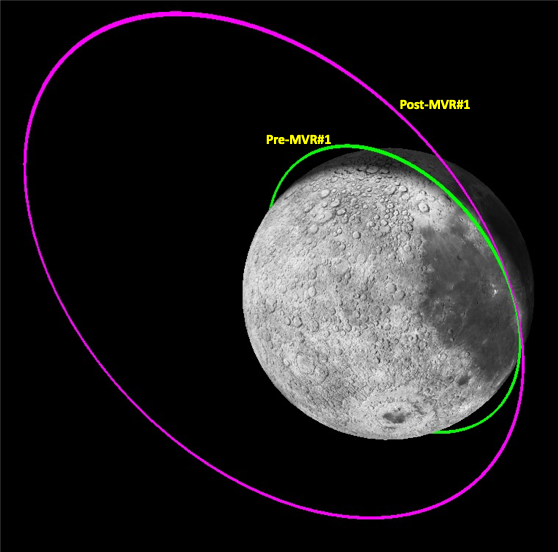ISRO’s Strategic Maneuver Extends Mission’s Scientific Scope and Paves the Way for Future Lunar Explorations
Bengaluru, NFAPost: The Indian Space Research Organization (ISRO) has executed a distinctive manoeuvre, moving the Propulsion Module (PM) of Chandrayaan-3 from lunar orbit to Earth’s orbit. This unconventional experiment mirrors the hop undertaken by the Vikram Lander, showcasing ISRO’s prowess in mission innovation.
The Chandrayaan-3 mission, launched on July 14, 2023, aimed to demonstrate a soft landing near the lunar south polar region and conduct experiments using the instruments on Vikram and Pragyaan. The mission achieved its primary objectives on August 23, with the historic touchdown of the Vikram Lander on the Moon and the subsequent deployment of the Pragyan rover.
While the Propulsion Module’s initial purpose was to ferry the Lander module to the final lunar polar circular orbit, unexpected fuel availability prompted a strategic shift. With over 100 kg of fuel remaining after a month of lunar orbit operations, ISRO decided to repurpose the PM for additional information gathering and mission operation strategy demonstrations.
To prolong the mission’s scientific contributions, the SHAPE payload for Earth observation was incorporated into the plan. The decision to re-orbit the PM to a suitable Earth orbit required meticulous trajectory planning to avoid potential collisions with the Moon or Earth’s GEO belt. The optimal Earth return trajectory was executed in October 2023, involving two manoeuvres to achieve an Earth orbit with a perigee altitude of 1.15 lakhs km.
The PM, currently orbiting Earth, crossed its first perigee on November 22, reaching an altitude of 1.54 lakhs km. With an orbit period of nearly 13 days and a 27-degree inclination, the PM’s trajectory poses no threat to operational Earth-orbiting satellites, according to current predictions.
A remarkable aspect of this mission is the operation of the SHAPE payload from Earth’s field of view, showcasing the adaptability and versatility of ISRO’s technology. Special operations, such as during a Solar Eclipse on October 28, 2023, further highlight the advanced capabilities of the mission.
One noteworthy Twitter comment from ISRO reads, “Chandrayaan-3 Mission: Ch-3’s Propulsion Module (PM) takes a successful detour! In another unique experiment, the PM is brought from Lunar orbit to Earth’s orbit. An orbit-raising manoeuvre and a Trans-Earth injection manoeuvre placed PM in an Earth-bound orbit.”
The UR Rao Satellite Centre/ISRO’s flight dynamics team played a pivotal role in this operation, developing an analysis tool from first principles, which is undergoing validation through the return manoeuvres of the Chandrayaan-3 PM. The main outcomes include advancements in trajectory planning and execution for lunar return missions, software module development for manoeuvre planning, gravity-assisted flyby execution, and controlled end-of-life PM operations to prevent debris creation.
In summary, ISRO’s successful repositioning of the Chandrayaan-3 PM signifies not only the mission’s adaptability but also a significant stride in lunar mission planning. This achievement underscores ISRO’s commitment to pushing the boundaries of space exploration and sets the stage for future missions with enhanced capabilities and strategic manoeuvring.





